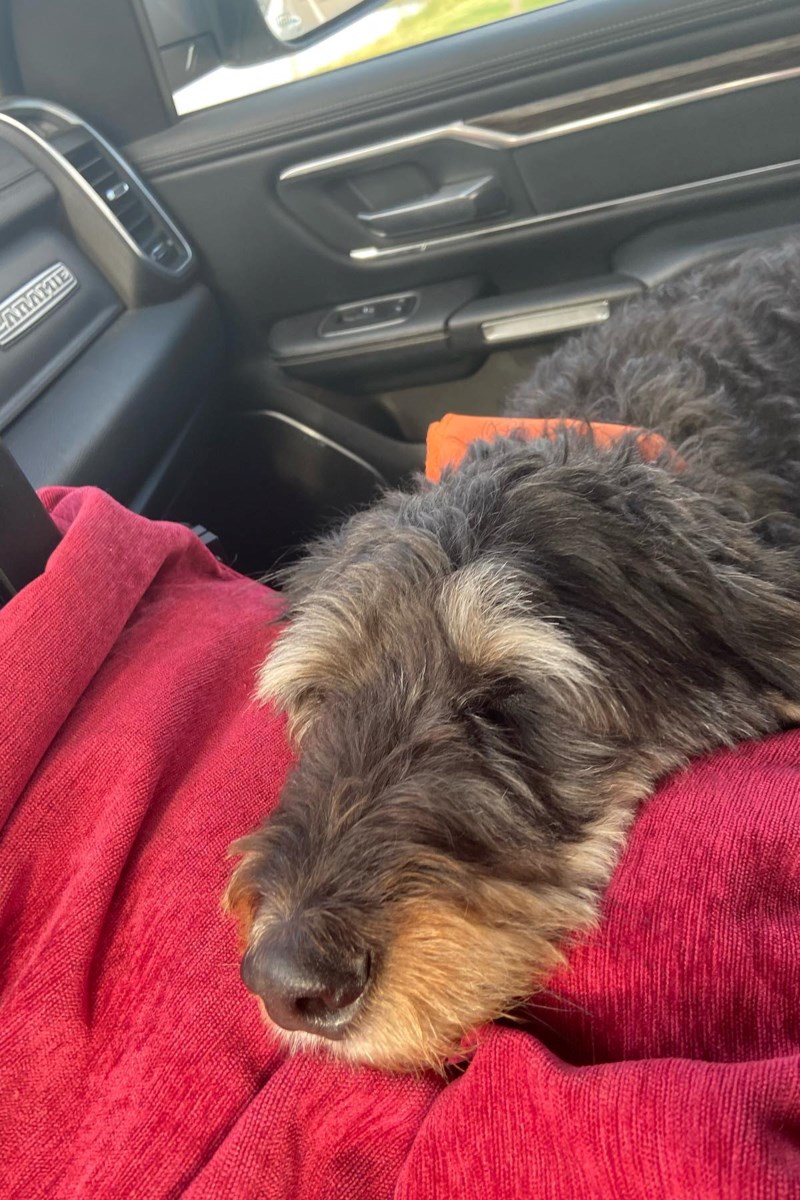- September 15, 2022
- No Comment
- 7 minutes read
Family pet survives exposure to blue-green algae thanks to quick response by owner – Lakeland TODAY

Sign In
Register
BONNYVILLE – A family pet is recovering after a scary trip to two veterinarian clinics following exposure to cyanobacteria, often referred to as blue-green algae, at Bonnyville Beach on Moose Lake.
“It was a fast-paced day, and it was a long day,” said St. Paul resident Tamara Gagne, recalling the events of Aug. 19.
Gagne, her daughter and a few others had plans to enjoy their weekend at a lake lot cabin on Moose Lake, when their five-year-old bernedoodle dog, Heidi, returned wet and shaking.
“Heidi is not typically the type of dog that wanders off and goes into the lake. She's a bit of a princess,” described Gagne.
“We don't usually worry about her going into a lake and quite honestly, we knew the risks of blue-green algae, but I guess (we) never really thought about how quickly or really how dangerous it was.”
When Heidi’s family realized that she had gone down to the lake and saw that she was wet. They knew they had to respond quickly.
“Within minutes she was not herself and was shaking,” Gagne told Lakeland This Week. “She was disoriented, and she was having tremors, which is basically the best way to describe it. She wasn't having a full-on seizure, but she was shaking.”
Heidi’s family raced her to the Bonnyville Veterinary Clinic after the facility had closed.
“Thankfully, there was somebody on call that met us at the vet (clinic) very quickly,” Gagne said.
This summer alone, the Bonnyville Veterinary Clinic has been notified of a handful of other cases where family pets have died after coming into contact with blue-green algae on Moose Lake.
RELATED STORY: Reports of pet death linked to suspected cyanobacteria in Moose Lake
While at the clinic, the family was told that two main issues can occur in pets that are exposed to blue-green algae.
If consumed, cyanobacteria can affect the animal’s neurological system, causing seizure almost immediately and lead to possible death within 20 minutes – sometimes less.
If cyanobacteria are absorbed through a pet's skin, it can affect the animal’s nervous system, but also their liver. As the vital organ works to filter pollutants in the body, it can cause irreversible damage to the liver.
“You hear that and you're just in panic mode, but you're thankful that you're in the (veterinary) clinic… The fact that we actually made it all the way to the Bonnyville clinic from the cabin was a good sign,” said Gagne, looking back.
The family was told the next 48 hours would be the most crucial if Heidi were to recover.
Heidi was given intravenous and pumped with fluids to help flush her system of the toxic cyanobacteria as quickly as possible.
But being that the incident was on a weekend and afterhours, Gagne and her family had to decide whether they were going to risk leaving Heidi hooked up to intravenous overnight at the local clinic or make the drive to the city, where overnight emergency veterinary services were available.
“We just looked at the vet and asked, ‘What would you do?’ She said, ‘I'd get to Edmonton as fast as you can.’ And so that's what we did.”
Heidi was placed in the family’s vehicle and again hooked up to fluids so she could make the trip to Sherwood Park’s emergency veterinary clinic.
“In most cases people have pets, and they're part of their family. They're almost as important as their children. And that's what Heidi is to us, so it was not even a consideration when we were at the vet in Bonnyville as to what had to happen next.”
Heidi’s story has a positive outcome, but this summer some other pets that visited Moose Lake were not as fortunate.
“Thankfully, the outcome was OK. And that's why I posted it (online) because it really was scary,” Gagne remarked.
However, after sharing Heidi’s experience on social media, Gagne learned that a friend of a family member lost a dog that was exposed to blue-green algae at Moose Lake earlier this summer.
“Their dog passed almost immediately… We didn't know about that until afterwards,” she said.
Spending lots of time out at the lake in the summer, Gagne is aware that come July and August, blue-green algae warnings are expected at local lakes, but the seriousness of the warnings didn’t have the same magnitude as they do now.
“We see the warnings from AHS saying ‘Keep your animals out because it could be fatal,’ and we'd like to say we understand them, but we just thought ‘Oh, it's not going to be our dog. Our dog doesn’t go in the lake without us’,” said Gagne.
But following her dog’s recent exposure to cyanobacteria, Gagne wants other pet owners to be aware of the risks and warning signs.
"This is a dangerous bacteria. It's not an outlier. We call it blue-green algae – it's not actually a plant. It's a bacteria in the water. So, you really have to be careful,” she said. “No one wants to lose a pet, especially not in such a traumatic way.”
Gagne recommends that all pet owners have their area’s local veterinary clinic’s number handy, including their after-hours contact information, especially when travelling.
“We were in panic mode, not knowing where to call… just be prepared the same way you would be prepared with your kid. You have a responsibility as a pet owner to be prepared,” added Gagne.
Jazmin Tremblay
Results > Archives >
© 2022 LakelandToday.ca

